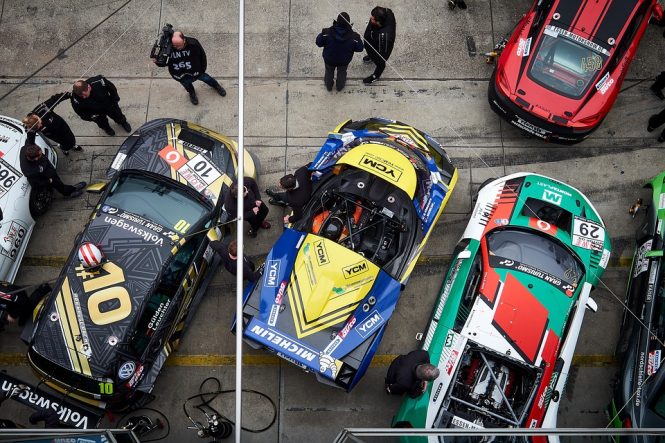
Pit Stop Perfection: The Science Behind a Fast Tire Change
In the high-speed world of motorsports, every second counts. A well-executed pit stop can mean the difference between victory and defeat, and at the heart of this crucial process is the art of the tire change. While it may seem like a straightforward task, the science behind a fast tire change is complex and fascinating. In this article, we’ll delve into the physics, mechanics, and human factors that come together to make a pit stop perfect.
The Physics of Pit Stops
When a car enters the pit lane, it’s not just the drivers and crew members who spring into action – the laws of physics also come into play. The goal of a pit stop is to minimize the time spent in the pit lane, which means maximizing the efficiency of the tire change process. This requires a deep understanding of the physical forces at work, including friction, gravity, and momentum.
As the car approaches the pit crew, it’s slowed down by the application of the brakes, which converts the kinetic energy of the vehicle into heat energy. The pit crew must then work quickly to remove the old tires and replace them with new ones, all while minimizing the time spent in contact with the car. This is where the science of tribology – the study of friction and wear – becomes crucial. The pit crew must carefully manage the friction between the tires, wheels, and equipment to ensure smooth and efficient tire changes.
The Mechanics of Tire Changing
The mechanics of tire changing are just as important as the physics. A well-designed pit stop involves a carefully choreographed sequence of events, with each crew member playing a specific role. The tire changer, for example, must use a combination of strength, speed, and technique to remove the old tire and replace it with a new one.
The tools used in pit stops are also critical. A good tire changer will use a specialized gun that can loosen the wheel nuts quickly and efficiently, while also being mindful of the torque and pressure required to avoid damaging the wheel or tire. The gun itself is a marvel of engineering, with some models featuring advanced materials and designs that allow for faster and more precise tire changes.
Human Factors: The Psychology of Pit Stops
While the physics and mechanics of pit stops are crucial, human factors also play a significant role. The pit crew must work together seamlessly, with each member anticipating the actions of the others and responding quickly to any unexpected challenges. This requires a high level of communication, trust, and teamwork – as well as a deep understanding of the psychological factors that influence performance under pressure.
Research has shown that pit crews that work together regularly, and have a strong sense of camaraderie and trust, tend to perform better under pressure. This is because they are able to anticipate each other’s actions and respond quickly to any mistakes or unexpected challenges. Additionally, the pressure of competition can actually improve performance, as the adrenaline and focus that come with racing can enhance reaction times and decision-making.
The Importance of Practice and Training
So, how do pit crews achieve pit stop perfection? The answer lies in a combination of practice, training, and experience. A good pit crew will rehearse their tire changes countless times, honing their skills and perfecting their technique. They will also study video footage of their pit stops, analyzing every detail to identify areas for improvement.
Additionally, pit crews will often participate in specialized training programs, which may include simulations, drills, and other exercises designed to test their skills and reaction times. These programs help to build the strength, endurance, and focus required to perform at a high level, even in the most intense and pressurized situations.
Conclusion
Pit stop perfection is a complex and multifaceted process, involving a deep understanding of physics, mechanics, and human factors. By combining cutting-edge technology, careful planning, and rigorous training, pit crews can achieve astonishing speeds and precision, giving their drivers the best possible chance of success on the track. Whether you’re a seasoned racing fan or just a enthusiast of high-performance machines, the science behind a fast tire change is a fascinating topic that offers insights into the very limits of human performance and engineering excellence.